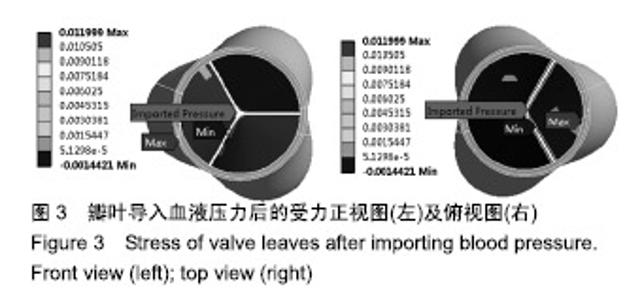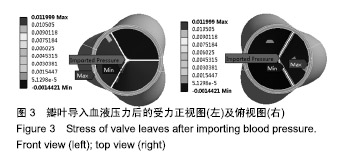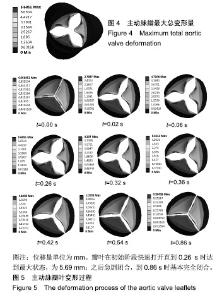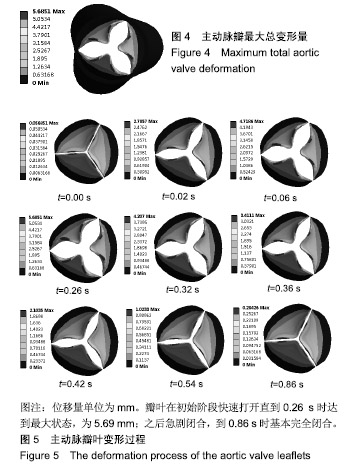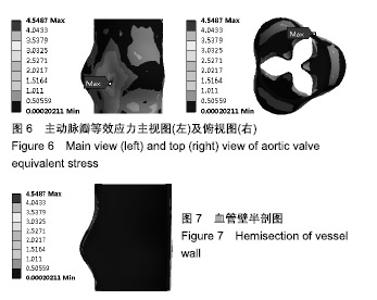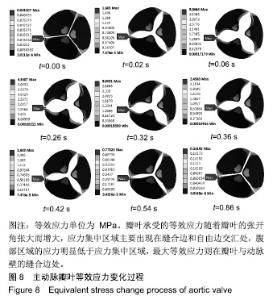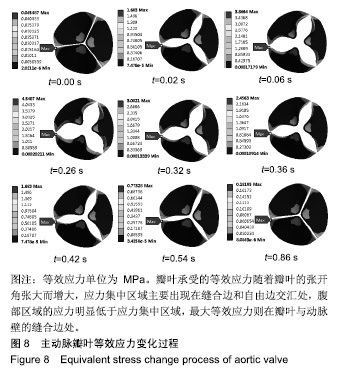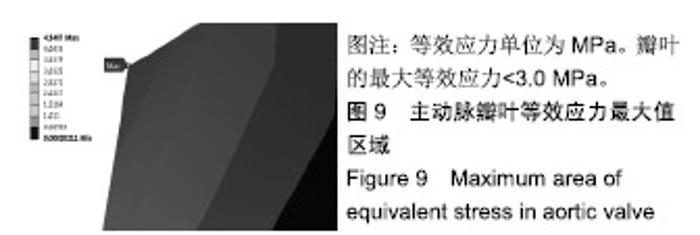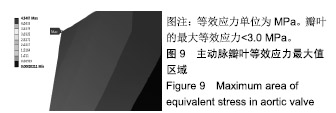| [1]马恩,王宗社,舒端朝.重症心脏瓣膜病患者人工心脏瓣膜置换术术后预后影响因素分析[J].中国医药导报,2017,14(26):64-67.[2]方智,张尔永.心脏瓣膜置换手术围手术期相关危险因素分析[J].四川大学学报(医学版),2017,48(5):750-754.[3]Kheradvar A,Groves EM,Dasi LP,et al.Emerging trends in heart valve engineering: part I. Solutions for future.Ann Biomed Eng. 2015;43(4): 833-843.[4]赵水平,胡大一.心血管病诊疗指南解读[M]. 3版. 北京:人民卫生出版社, 2011.[5]Butcher JT.The root problem of heart valve engineering.Sci Transl Med. 2018;10(440):eaat5850.[6]Zhu AS,Grande-Allen KJ.Heart valve tissue engineering for valve replacement and disease modeling. Curr Opin Biomed Eng. 2018;5: 35-41.[7]朱平,卢聪,张镜芳,等.生物瓣膜失效功能原因分析[J].中华胸心血管外科杂志,2006,22(2):93-95.[8]Butcher JT,Simmons CA,Warnock JN.Mechanobiology of the Aortic Heart Valve.J Heart Valve Dis. 2008;17(1):62.[9]袁泉,王晓伟,张承瑞.生物瓣膜几何设计理论及其有限元分析[J].中国组织工程研究,2007, 11(18):3480-3483.[10]王聪,黄晓阳,苏茂龙.人体二尖瓣瓣膜厚度有限元分析及其仿真[J].厦门大学学报(自然版),2016, 55(2):272-277.[11]钟琪,曾文华,黄晓阳,等.人体二尖瓣建模及生物力学分析[J].医用生物力学,2014,29(1):53-59.[12]Hsu MC,Kamensky D,Bazilevs Y,et al.Fluid–structure interaction analysis of bioprosthetic heart valves: significance of arterial wall deformation. Comput Mech. 2014;54(4):1055-1071.[13]Wu MCH,Zakerzadeh R,Kamensky D,et al.An anisotropic constitutive model for immersogeometric fluid–structure interaction analysis of bioprosthetic heart valves.J Biomech.2018;(74):23-31.[14]Weinberg EJ,Schoen FJ,Mofrad MRK,et al.A computational model of aging and calcification in the aortic heart valve.PLoS One. 2009;4(6): e5950.[15]高全超.残余应力对支架放置后血管的力学特性的影响[D].上海:上海交通大学,2012.[16]Holzapfel GA,Gasser TC,Ogden RW.A new constitutive framework for arterial wall mechanics and a comparative study of material models.J Elast.2000;61(1-3):1-48.[17]Chandran KB,Rittgers SE,Yoganathan AP.生物流体力学[M].北京:机械工业出版社,2015.[18]Yap CH,Saikrishnan N,Tamilselvan G,et al.Experimental technique of measuring dynamic fluid shear stress on the aortic surface of the aortic valve leaflet.J Biomech Eng. 2011;133(6):1-15. [19]张霞.基子流固耦合生物瓣膜非线性力学性能分析[D].济南:山东大学, 2015:1-74.[20]刘晨.基于有限元仿真的心脏瓣膜力学性能研究[D].沈阳:沈阳工业大学, 2017:1-85.[21]王志超.基于超弹模型的主动脉瓣流固耦合分析[D].济南:山东大学, 2018:1-80.[22]Kida N,Adachi T.Finite element formulation and analysis for an arterial wall with residual and active stresses.Comput Methods Biomech Biomed Engin.2015;18(11):1143-1159.[23]Amini R,Eckert CE,Koomalsingh K,et al.On the in vivo deformation of the mitral valve anterior leaflet: effects of annular geometry and referential configuration.Totally convex functions for fixed points computation and infinite dimensional optimization.Kluwer Academic Publishers,2012. |
